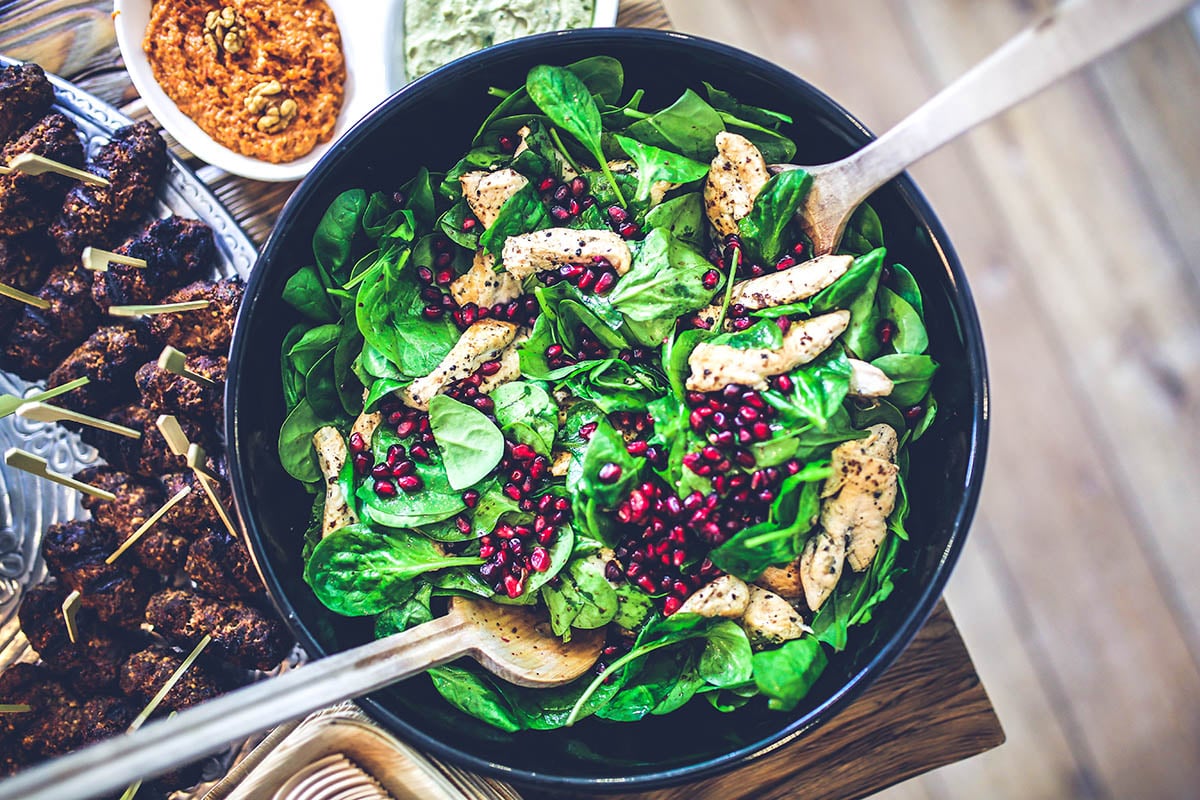When most people think about eating healthy, they usually think about it in connection to weight loss. However, eating healthy affects every aspect of our day, from the moment we wake until the moment we go to bed.
In the Mood for Food
There have been countless studies on how food affects our mood and whether food can make us happy. In a detailed article called Can Food Make People Happy?, How Stuff Works concludes that, “Whether it's psychological or physiological, it's clear that foods have a powerful effect on our moods.”
Let’s face it - in addition to being essential to our survival, there’s no denying the enjoyment and pleasure that food gives us. However, some foods are more beneficial to us than others, some that elevate our mood and some that do the opposite.
The Good and Bad of Junk Food
First, let’s address junk food.
As expressed in an article titled Searching For Happiness? It’s Official — Toss Out The Junk Food, whether it’s potato chips, candy or cakes, we know it’s not good for us physically, and now studies show that it’s not good for our emotional and mental health either.
The same article points to a study from Columbia University that was published in the American Journal of Clinical Nutrition even showing a link between eating junk food and depression.
Many psychologists and dieticians, however, suggest that as long as we follow a healthy balanced diet, it's okay to indulge in the occasional slice of cake, handful of candy or bag of potato chips. A Huffington Post article shares that treating yourself from time to time is completely okay and that it can “actually help us to have a balanced diet and to form a positive relationship with food.”
As accredited practising dietitian Chloe McLeod says in the Huffington Post article: "If you're never eating the foods you really enjoy or which give you pleasure, then that's going to result in feelings of deprivation. If you have these feelings of deprivation, it can increase the chance of bingeing or overeating, and this can end up being quite an unhealthy cycle."
Feel Good Foods
So, if eating junk food can negatively impact our emotional and mental health, what foods actually make us feel good?
A Healthline article shares that adding protein to meals can increase the release of dopamine and norepinephrine, which improve your mood and energy. Try eggs, tofu, poultry, seafood, and low-fat Greek yoghurt.
There are a few vitamins that may also be helpful for mood. Vitamin D may help relieve mood disorders, while vitamins folate and B-12 can help ease depression. To add folate to your diet, try broccoli, lentils, oatmeal, and leafy greens. To add B12, add cottage cheese, lean beef, and salmon.
Lastly, Healthline suggests that high fiber foods such as complex carbohydrates which contain soluble fiber can increase the “feel good” chemical, serotonin. Eating a higher fiber diet of fruits, vegetables and grains protect against depression. Add more fiber into your diet by eating more oats, beans, peas, Brussels sprouts.

Why Employers Should Care
From standing desks and flexible working hours to on-site yoga classes and wellbeing-focused employee benefits, employee wellbeing has become a critical focus for organizations everywhere. After all, healthier employees mean reduced sick days, less absenteeism, and higher productivity. The importance of promoting and encouraging a healthier lifestyle cannot be overstated.
Below we provide four tips on how employers can help employee wellbeing through better eating.
4 Ways Employers Can Encourage Healthier Eating
- Revamp your cafeteria selections. Having a cafeteria on-site with healthy and nutritious choices is a great way for employers to encourage better eating. Many employers are now opting for more plant-based, vegan meals to promote better environmental and sustainable alternatives. Research shows that menu selections can also help us make healthier choices.
- Make it easy to eat healthily. Many times, we make bad food choices not because we enjoy eating bad food, but because it’s the most convenient or only option available.
In Sweden, for example, Convini self-service fridge vending machines allow employers to select what foods, snacks and meals they would like to add to the fridge, which employees can then purchase. This way, employers can be sure they are providing employees with healthy choices. - Freshen up meetings and events. In addition to adding healthy snack and meal options to office cafeterias and vending machines, replace soft drinks, potato chips and cakes during meetings and company events with healthier catering and food choices.
- The benefit of healthier employee benefits. From discount food boxes and grocery delivery services, to discount vitamins and savings at health stores, promote healthier eating through your employee benefits offering.
Benify’s 2018 Employee Happiness Index, which surveyed over 20,000 employees and HR leaders from over 100 organizations across a variety of industries, revealed that health and wellness benefits are the most important benefit for Generation Z, and the second most important for millennials and Generation X. The survey results also showed that food and drink benefits are the most appreciated benefit for Generation Z.
Want to learn more about what benefits employees want and which benefits are most popular among different generations? Download our 2018 Employee Happiness Index e-book today.
/Content%20offers%20(UK+COM)/E-books%20(UK+COM)/Happiness%20Index%20(UK+COM)/Employee_Index_ebook-853768-edited.png?width=351&name=Employee_Index_ebook-853768-edited.png)